|
Homestead, Fla – The National Park Service (NPS) today announced the selection of Sarah Hopson as superintendent of Biscayne National Park, effective July 28. Hopson served as the park’s acting superintendent for four months this year.
“Sarah is a seasoned NPS veteran who values the NPS workforce and the importance of community engagement,” said Pedro Ramos, superintendent of Everglades and Dry Tortugas national parks, who also oversees Biscayne National Park. “I am certain that her expert organizational experience will prove beneficial as Biscayne works to advance its highest priorities.” Prior to Biscayne, Hopson served as Chief of Staff for the Southeast Region since 2021. In this role, she collaborated with regional leadership to provide strategic vision and facilitate the success of key management objectives for the 75 park units in the region. Some of her accomplishments include supporting completion of the land exchange at Virgin Islands National Park, the acquisition and rehabilitation of the Selma Interpretive Center at Selma to Montgomery National Historic Trail and the A.G. Gaston Motel at Birmingham Civil Rights National Monument. Sarah was also instrumental in the coordination of financial plans and management structure for six newly established park units. Hopson also helped guide regional responses to many critical issues affecting the National Park Service to include coral reef health, shoreline stabilization, disaster recovery, and numerous other park planning efforts. “Biscayne's employees, volunteers, and interns demonstrate their passion and dedication to the NPS mission every day and I am honored to become a permanent member of their team,” Hopson said. “I look forward to the opportunity to collaborate with the community and stakeholders to navigate the unique and complex challenges that face one of the largest marine parks in the NPS.” Hopson began her NPS career 18 years ago as a program assistant for the NPS Cultural Resources Stewardship, Partnerships, and Science Directorate in Washington, DC. She also worked for the Office of the NPS Liaison to the White House, served as acting superintendent for Guilford Courthouse National Military Park and as the management analyst to the NPS Southeast regional director. Prior to joining NPS in 2006, she worked for the National Trust for Historic Preservation where she fostered state and local partnerships. Hopson holds a bachelor's degree in history earned at Covenant College in Georgia. She calls Salt Lake City, Utah home but has deep roots in the southeast with family located throughout the region. Outside of work, Hopson enjoys baking, traveling (often to NPS sites), hiking and reading. www.nps.gov About the National Park Service. More than 20,000 National Park Service employees care for America's 430 national parks and work with communities across the nation to help preserve local history and create close-to-home recreational opportunities. Learn more at www.nps.gov, and on Facebook, Instagram, Twitter, and YouTube.
0 Comments
Everglades NP seeks public comment on adverse effects to utility buildings at Shark Valley Tower6/5/2024 HOMESTEAD, Fla. – Everglades National Park is seeking public comment on resolving adverse effects from the proposed demolition of two small utility buildings, which are historic resources near the Shark Valley Observation Tower. The public comment period is open through July 5 on the NPS Planning, Environment & Public Comment site (https://parkplanning.nps.gov/watersystems).
Under the proposed action, the Shark Valley Tower Pump House and the adjacent Shark Valley Generator Annex would be demolished to make way for potable water and wastewater improvements. The buildings are a contributing part of the National Park Service Mission 66 development in that area. This project is part of the parkwide Rehabilitation of Parkwide Water and Wastewater Systems, which would address the physical and operational deficiencies of the park’s potable water distribution systems and wastewater collection systems. The Environmental Assessment for the rehabilitation project was previously released for public review and comment in November 2023. In accordance with National Historic Preservation Act Section 106 regulations (36 CFR 800.6(a)(4)), the public may comment on the adverse effects during the public review period through July 5. The preferred method of providing comments is through the project website at https://parkplanning.nps.gov/watersystems using the “Open for Comment” tab. Comments may also be submitted in writing to: Everglades National Park Attn: Superintendent, Shark Valley Utility Buildings Demolition 40001 State Road 9336 Homestead, FL 33034 Mailed comments should be postmarked no later than July 5. Learn more about Everglades National Park online at nps.gov/ever or follow the park on Facebook, X, and Instagram. Overflow camping is limited while dredging project continues KEY WEST, Fla. – On April 25, Dry Tortugas National Park reopened the campground as scheduled after dredging the Fort Jefferson moat and redistributing sand that had built up from several hurricanes. For the safety of park visitors, the campground was closed for 45 days during the use of heavy construction equipment.
The next phase of the project involves dredging the finger piers to restore recreational and park access to the Garden Key waterfront. After the finger piers, the dredging will move to the moat near North Beach. During this time, the project will continue to use the area adjacent to the campground as a staging area, which may limit overflow camping. The dredging work is part of a larger project to restore water flow in the moat and repair Fort Jefferson’s counterscarp (moat wall) damaged by Hurricane Irma in 2017 and Hurricane Ian in 2022. The final phase of the project will repair breaches in the moat wall and strengthen the existing counterscarp. The entire project is scheduled for completion by fall 2024. Construction activity may continue to cause noise and visual impacts for day trip visitors traveling by seaplane, ferry and private boat. The park is working closely with the contractor to ensure maximum safe access to Garden Key and Fort Jefferson for all visitors. The proposed repairs and dredging are supported by construction funds allocated through Public Law 115-123 for national park units impacted by Hurricanes Harvey, Irma and Maria. Dry Tortugas National Park is located about 70 miles west of Key West and encompasses seven keys, collectively known as the Dry Tortugas. Fort Jefferson, a 19th century American masonry coastal fort, was constructed in 1846 to protect shipping access to the Gulf of Mexico. Garden Key, where the fort is located, is the primary destination for people visiting the park. The 14-acre island is home to the park’s visitor center, administrative areas, docking and mooring, campground and beaches. For more information about Dry Tortugas National Park, visit nps.gov/drto or follow the park on Facebook, X, and Instagram. HOMESTEAD, Fla. – Everglades National Park will provide over 20 night-sky events during the month of April. Everglades Dark Sky Celebration is a great opportunity to learn about the characteristics of the night sky for all ages. Ranger-led presentations and guest speakers will feature nocturnal wildlife, star gazing, constellation tours, a supermoon celebration, and a Lyrid meteor shower celebration. All ranger presentations are free and open to the public.
These presentations will offer park visitors and the local community opportunities to learn about the night sky, view the stars with telescopes and learn about the science that deals with celestial objects, space and the physical universe. Everglades National Park is collaborating with Everglades Dark Sky, a collaborative of associations, organizations and businesses in the greater Everglades region, to bring awareness to the resources of the night sky. Everglades National Park is also partnering with organizations to offer special events through the park in April. A guest presenter series will host Dr. Mario Motta and Anthony Sleiman at the Ernest F. Coe Visitor Center. A star party at Shark Valley will cohost organizations such as South Florida Amateur Astronomical Association, Southern Cross Astronomical Society, and the Department of Physics at the University of Miami. After the eclipse on April 8, O’Miami will facilitate a two-hour poetry presentation at the Long Pine Key Campground. Night-sky photographer Anthony Sleiman will feature his work in an exhibit at the Guy Bradley Visitor Center in Flamingo during the month of April. To view the detailed schedule and descriptions of the events within the park visit Everglades Dark Sky Celebration. To learn more about dark sky events in the South Florida region visit Everglades Dark Sky. Learn more about Everglades National Park online at nps.gov/ever or follow the park on Facebook, X, and Instagram. National Park Service archeologists identify sunken British warship in Dry Tortugas National Park3/14/2024 KEY WEST, Fla. – National Park Service archeologists identified the archeological remains of HMS Tyger, an 18th century British warship, within the boundaries of Dry Tortugas National Park. Built in 1647, the Fourth-Rate, 50-gun frigate sunk in 1742 after it ran aground on the reefs of the Dry Tortugas while on patrol in the War of Jenkins Ear between Britain and Spain. While the remains of the historic shipwreck were first located in 1993, new research has uncovered definitive evidence.
Using leads from historical research, archeologists from Dry Tortugas National Park, the Submerged Resources Center and the Southeast Archeological Center surveyed the site in 2021 and found five cannons approximately 500 yards from the main wreck site. Buried in the margins of the old logbooks was a reference that described how the crew “lightened her forward” after initially running aground, briefly refloating the vessel and then sinking in shallow water. Based on their size, features and location, the guns were determined to be British six and nine-pound cannons thrown overboard when HMS Tyger first ran aground. This discovery and reevaluation of the site led archeologists to make a sound argument that the wreck first located in 1993 was in fact the remains of HMS Tyger. The findings were recently published in the International Journal of Nautical Archaeology. “Archeological finds are exciting, but connecting those finds to the historical record helps us tell the stories of the people that came before us and the events they experienced,” said Park Manager James Crutchfield. “This particular story is one of perseverance and survival. National parks help to protect these untold stories as they come to light.” After HMS Tyger wrecked, the approximately 300 members of the crew endured 66 days marooned on what is today Garden Key. They erected the first fortifications on the island, more than 100 years before Fort Jefferson, which now dominates the island and is the principal cultural resource within the park. The stranded survivors battled heat, mosquitoes and thirst while attempting to escape the deserted island. They built vessels from salvaged pieces of the wrecked HMS Tyger and made several attempts to seek help, gather additional supplies and locate Spanish naval vessels in the area. After a failed attack on a Spanish vessel, the surviving crew burned the remains of Tyger to ensure its guns did not fall into enemy hands and used their makeshift vessels to make a 700-mile (1,125 km) escape through enemy waters to Port Royal, Jamaica. While the site is routinely monitored and currently protected under cultural resource laws applicable to other sites within the park, positive identification of HMS Tyger as a British naval vessel offers additional protection under the Sunken Military Craft Act of 2004. The remains of HMS Tyger and its related artifacts are the sovereign property of the British Government in accordance with international treaty. A similar warship, HMS Fowey, was lost in what is now Biscayne National Park in 1748 and is currently managed under a Memorandum of Agreement between the United States and the British Royal Navy. “This discovery highlights the importance of preservation in place as future generations of archeologists, armed with more advanced technologies and research tools, are able to reexamine sites and make new discoveries,” said Josh Marano, the maritime archeologist who led the team that made the discovery. March is Florida Archeology Month. Learn more about archeology in the National Park Service at https://www.nps.gov/subjects/archeology/index.htm For additional photos and more details about the HMS Tyger, view the article on the NPS website. For more information about Dry Tortugas National Park, visit nps.gov/drto or follow the park on Facebook, X, and Instagram. Public comment period runs Feb. 2 to March 31 HOMESTEAD, Fla. – Everglades National Park is seeking public comment on the park’s upcoming wilderness stewardship plan, which will guide the preservation, management and use of the park’s wilderness lands. The National Park Service (NPS) manages 97% of the park’s 1.5 million acres as wilderness, including submerged marine lands. A StoryMap with details is available on the NPS Planning, Environment & Public Comment site, where written comments may be submitted from Feb. 2 through March 31.
“We are very excited to gather public input on our wilderness stewardship planning effort,” said Superintendent Pedro Ramos of Everglades and Dry Tortugas National Parks. “Having a wilderness stewardship plan that balances the protection and management of the Marjory Stoneman Douglas Wilderness with active use and enjoyment by people is essential.” The purpose of the wilderness stewardship plan is to guide the preservation, use and management of the park’s established wilderness areas. In accordance with the Wilderness Act and other applicable laws and policies, the plan would provide long-term direction for:
The NPS will host two virtual civic engagement meetings for the public to learn more and ask questions on Feb. 28 and March 12 at 10 a.m. and 6 p.m. on both days. A link to join the virtual public meetings will be available on the project website under “Meeting Notices.” The meetings will begin with a presentation followed by a moderated question and answer session. Located within Everglades National Park, the Marjory Stoneman Douglas Wilderness is the largest unit of the National Wilderness Preservation System east of the Rocky Mountains. Established in 1934, Everglades National Park was considered wilderness 30 years before the Wilderness Act of 1964 was signed into law and 44 years prior to its official wilderness designation in 1978. The plan would provide general management direction for established wilderness areas, proposed areas for wilderness designation, and potential wilderness within the East Everglades Addition. The plan would also include developed and front country areas that serve as “gateways” to wilderness. This plan would replace Everglades National Park’s 1981 Backcountry Management Plan and supplements park's 2015 General Management Plan. The public can view a StoryMap with information about the planning effort and submit written comments on the NPS Planning, Environment and Public Comment (PEPC) website at parkplanning.nps.gov/ever-wsp. Although submitting comments through the project website is preferred, comments may also be mailed to: Superintendent Attn: Wilderness Stewardship Plan Everglades National Park 40001 State Road 9336 Homestead, FL 33034 Mailed comments must be postmarked by March 31. The next steps will include development of alternatives, additional public comment, and a management decision as required under the National Environmental Policy Act (NEPA). Learn more about Everglades National Park online at nps.gov/ever or follow the park on Facebook, X, and Instagram. Everglades announces Oct. 27 grand opening of Flamingo visitor center, lodge and restaurant9/29/2023 Everglades National Park and Everglades Guest Services to unveil the only hotel in Everglades National Park, new restaurant, and redesigned visitor center HOMESTEAD, Fla. – Everglades National Park and its authorized concessioner, Everglades Guest Services, will hold a grand opening event on Oct. 27 for the reconstructed and renamed Guy Bradley Visitor Center and the new Flamingo Lodge & Restaurant. The daytime celebration and ribbon cutting is open to the public, and a full event schedule can be found on the park’s website. The former lodge and visitor center building were damaged by hurricanes in 2005 and 2017. Located along the coast of Florida Bay, Flamingo is a premier destination in Everglades National Park at the southernmost tip of the Florida peninsula.
“We are excited to see these projects come to fruition after years of planning and hard work,” said Pedro Ramos, superintendent of Everglades and Dry Tortugas national parks. “We are grateful for the incredible public and private partnerships that have enabled us to once again make Flamingo a world-class destination for our park visitors.” The Guy Bradley Visitor Center opened its doors in July. The former Flamingo Visitor Center was renamed for the first Audubon game warden, who was killed in the line of duty protecting wading birds during the plume hunting era of the late 1800s and early 1900s. The National Park Foundation, with generous support from the Cornelia T. Bailey Foundation, the Alliance for Florida’s National Parks and the Florida National Parks Association contributed to the visitor center exhibits, landscaping and design, as well as other projects in the Flamingo area. The exhibits provide countless opportunities for visitors to learn more about the coastal ecosystem and its inhabitants, including cultural stories from the people who made homes in the challenging environment. The recent renovations incorporate energy efficient features while meeting Florida building code for coastal high hazard zones. The park placed special emphasis on preserving the unique features of the Mission 66 architecture with its distinctive pink color and Miami Modern elements. The National Park Service's (NPS) Mission 66 campaign in the mid-1900s expanded visitor services and modernized park facilities leading up to the agency’s 50th anniversary. The lodge and restaurant also draw inspiration from this historic project. The original Flamingo Lodge & Restaurant was a popular visitor spot for nearly 40 years. Following its destruction by hurricanes, the NPS conducted extensive feasibility studies and began planning for the new lodge in 2018. Considerations for resiliency and storm protection in the face of sea level rise from climate change were integrated in the design and building of the lodge, restaurant and visitor center. Jointly funded by the NPS and Everglades Guest Services, LLC, an authorized concessioner of the NPS, Flamingo Lodge & Restaurant stands as a testament to infrastructure built with care in a delicate ecosystem. “It is an honor to partner with the National Park Service to open the Flamingo Lodge and Restaurant,” shared Nico Foris, chief executive officer of Everglades Guest Services. “We are thrilled to continue our tradition of excellence in hospitality, offering another option at Flamingo in addition to our campsites, eco-tents and houseboats. We look forward to welcoming more park visitors this season and beyond.” The lodge features a total of 24 rooms, constructed from durable shipping containers and raised off the ground by stairs. This includes eight two-bedroom suites that can accommodate up to six guests, twelve one-bedroom suites suitable for up to four guests and four studios designed for two guests. Additionally, four of the 24 rooms are ADA accessible and can be accessed by an elevator and walkway. The interiors blend industrial chic with subtropical influences, from palm tree-themed window shades to calming blue and green tones. Every room boasts an eastward-facing balcony, offering breathtaking sunrise and sunset views over Florida Bay. Adjacent to the lodge, Flamingo Restaurant invites guests to indulge in traditional South Florida fare while enjoying views of nearby Florida Bay. Like the lodge, the restaurant is made from durable shipping containers. The restaurant offers meal service for breakfast, lunch and dinner, plus a full-service bar. Lodge reservations are accepted now for stays starting Nov. 1. Nightly rates start at $159 for June through October and $259 from November through May, plus tax. There is a 14-day maximum limit on stays. A park entrance fee or pass is required to enter Everglades National Park to access Flamingo Lodge & Restaurant, both for vehicles and vessels. Gasoline and boat slips are also available at the Flamingo Marina and Store for visitors arriving by boat. Located just two hours from downtown Miami, Flamingo provides visitors the opportunity to explore the nation’s largest subtropical wilderness through popular recreational activities such as fishing, boating, paddling, hiking, birding and wilderness camping. Abundant wildlife viewing opportunities await, from manatees to crocodiles and alligators. For more information on overnight accommodations and other guest services, please visit https://flamingoeverglades.com/flamingo-lodge-restaurant/ or call 855-708-2207. Learn more about Everglades National Park at nps.gov/ever or follow the park on Facebook, Twitter, and Instagram. Guy Bradley Visitor Center | Flickr (Photo credit: National Park Service) Flamingo Lodge & Restaurant | Flickr (Photo credit: Flamingo Everglades Adventures) Public comment period to run from September 22, 2023 to October 23, 2023.
HOMESTEAD, Fla. -- The National Park Service (NPS) invites public comment on proposed changes to fees on Boca Chita and Elliott Keys in Biscayne National Park, including the implementation of a docking fee and a flat camping fee. These fees would be utilized to enhance visitor services and better address common issues, such as trash pick-up and disposal, dock repair, resource damage mitigation and facilities repair and maintenance. Under the park’s proposal, a $45 docking fee would be implemented at both Boca Chita Key and Elliott Key harbors, taking effect January 1, 2024. The second proposed change is the elimination of the current “camping only” fee (camping without docking a boat), leaving a flat camping fee of $35. “The proposed fees would enable Biscayne National Park to enhance the overall quality of the visitor experience and management of these remote islands,” said Biscayne National Park Acting Superintendent Randalle Burton. “The public’s feedback on this proposal is important to us and will help inform plans to provide the park experience our visitors seek and deserve.” Boca Chita Docking Elliott Key Docking Boca Chita Camping Elliott Key Camping Current Rates $0 $0 $35/night boat docking and camping $25/night camping only (no boat docking) $35/night boat docking and camping $25/night camping only (no boat docking) Proposed 2024 Rates $45 $45 $35 camping $35 camping Eighty percent of docking fee revenue stays at Biscayne National Park to fund projects related to visitor experiences. Recent examples of fee revenue improvements include improved park signage, updated comfort stations and newly replaced picnic tables and grills. The remaining twenty percent of collected fees is allocated for visitor experience improvements at non-fee parks throughout the NPS. Comments regarding the park’s proposed docking fee may be submitted electronically on the NPS Planning, Environment and Public Comment (PEPC) website through October 23 at 11:59pm at: https://parkplanning.nps.gov/BISCNPIslandAmenities Written comments may be mailed to: National Park Service Biscayne National Park Attn: Superintendent 9700 SW 328 Street Homestead, FL 33033 www.nps.gov About Boca Chita Key and Elliott Key. Boca Chita and Elliott Keys offer unique national park experiences. Accessible only by boat, both locations feature beautiful waterfront views, grassy camping areas, docks, restrooms, picnic tables and grills. Recreational opportunities like these at Biscayne National Park contributed to boosting the local economy with visitors spending $50.9 million on hotels, gas, and restaurants in 2022. These expenditures supported a total of 659 jobs, $25.8 million in labor income, $43.6 million in value added and $74.1 million in economic output in local gateway economies surrounding Biscayne National Park. About Biscayne National Park. Within sight of downtown Miami, Biscayne National Park protects a rare combination of subtropical islands, mangrove shoreline, biodiverse coral reefs, and 10,000 years of human history. The park is ninety-five percent water and encompasses the northernmost Florida Keys. Most of the park is only accessible by boat. Home to a vast array of species, visitors to Biscayne might encounter sea turtles, dolphins, sharks, stingrays, and the West Indian manatee. To learn more please visit https://www.nps.gov/bisc/index.htm For regular updates from the park follow us on https://www.facebook.com/BiscayneNPS and https://www.instagram.com/biscaynenps/ Everglades NP announces construction of Marjory Stoneman Douglas Visitor Center - Everglades City9/13/2023 EVERGLADES CITY, Fla. — The National Park Service issued a Finding of No Significant Impact (FONSI) for the Environmental Assessment and awarded a new construction contract for the Marjory Stoneman Douglas Visitor Center project in Everglades National Park. This project includes a new two-story building and major site improvements at the location of the former Gulf Coast Visitor Center in Everglades City. Everglades City is where Everglades National Park was dedicated on Dec. 6, 1947.
The original Gulf Coast Visitor Center and surrounding infrastructure were destroyed by Hurricane Irma in September 2017. Since that time, a temporary visitor contact station has been in place to provide orientation for park visitors. This project will build resiliency, enhance the visitor experience and improve the park’s ability to maintain the facilities. “We are so pleased to announce the award of this contract and get this project moving,” said Pedro Ramos, superintendent of Everglades and Dry Tortugas national parks. “These improvements will provide a premiere place to showcase the Gulf Coast of Everglades National Park and will ultimately contribute to supporting the local economy of Everglades City.” The two-story visitor center will be built for resiliency to withstand hurricane-force winds and storm surges. The building will include visitor orientation, retail space, staff offices, and an elevated deck with views of Chokoloskee Bay. The elevated building is designed to meet LEED (Leadership in Energy & Environmental Design) silver requirements and Florida building code for coastal high hazard zones. Other components of the project include elevating the site to reduce flooding from storm events and king tides, replacing existing bulkhead at the marina, expanding and dredging the marina basin, an improved kayak launch, concession building for rentals near the canoe/kayak ramp, floating docks, and a new public entrance road. Enhanced pedestrian walkways, outdoor seating, native landscaping and shoreline stabilization are also part of the plan. The new visitor center will be named for Marjory Stoneman Douglas, author and environmental advocate for the establishment of Everglades National Park. The building of the new visitor center was authorized by Congress in 1989 as part of the Everglades National Park Protection and Expansion Act of 1989. The construction of a new visitor center, an improved canoe-kayak launch, and improved existing parking areas were identified in the park’s 2015 Final General Management Plan. The construction activities are anticipated to take a minimum of two years to complete. While closures at the Gulf Coast location are planned during construction, the park will strive to maintain some visitor access when it is safe to do so. The canoe/kayak launch is expected to remain open continuously until April 1, 2024, when it will close for construction. Onsite concession services including boat tours and rentals will cease Sept. 30 and are expected to resume in the fall of 2024. Due to the complexity of this project, all construction and closure dates may vary due to unforeseen circumstances. To review the Environmental Assessment and Finding of No Significance for this project, visit the NPS Planning, Environment & Public Comment (PEPC) site at parkplanning.nps.gov/gulfcoast. Learn more about Everglades National Park online at nps.gov/ever or follow the park on Facebook, Twitter, and Instagram. KEY WEST, Fla. — Dry Tortugas National Park will reopen on August 31 after the passage of Hurricane Idalia. Weather permitting, ferry and seaplane tours will also resume. Fort Jefferson, South Beach, and the campground on Garden Key are open.
Loggerhead Key and the North Beach of Garden Key will remain closed until park staff are able to safely assess storm impacts. Bush Key is closed for sea turtles and nesting birds at this time of year. No landing or anchoring is permitted within 100 feet of the shoreline of Bush Key. As park staff are still assessing the damage from the high winds, storm surge, and wave action, visitors should wear proper footwear and watch out for hazards. Park staff will have limited abilities for emergency response. The NPS Hurricane and Severe Weather Response has updates for all National Park Service sites. Private Boating Reminders Private boats recreating or stopping in Dry Tortugas National Park must obtain a boat permit at the Garden Key dock house before recreating within the park. The finger piers remain closed from Hurricane Ian damage. Vessels are prohibited from using the seaplane beach. Private vessels may use the main dock when available, but space is limited. The east end of the main dock is reserved for the Yankee Freedom III between 10 a.m. and 3 p.m. each day. Vessels may use the west end of the dock when available, but dock space is limited to approximately three boats tied to the dock and no more than two boats deep (hip to hip). Total allowable dock usage for one day is two hours (cumulative) per vessel, and no overnight docking is permitted. The National Park Service has secured funding for repairs to the finger piers and dinghy beach, and repairs are expected to be completed in 2024. For more information about Dry Tortugas National Park, visit nps.gov/drto or follow the park on Facebook, Twitter, and Instagram. About the National Park Service. More than 20,000 National Park Service employees care for America's 425 national parks and work with communities across the nation to help preserve local history and create close-to-home recreational opportunities. Learn more at www.nps.gov, and on Facebook, Instagram, Twitter, and YouTube. |
Submit Your StoriesChamber members send us your press releases on your organizations accomplishments, staff awards and/or major happenings. We will post them for free. Archives
July 2024
Categories
All
|
|
Greater Key West Chamber of Commerce. All Rights Reserved.
510 Greene St., First Floor | Key West, FL 33040 [email protected] | sitemap |



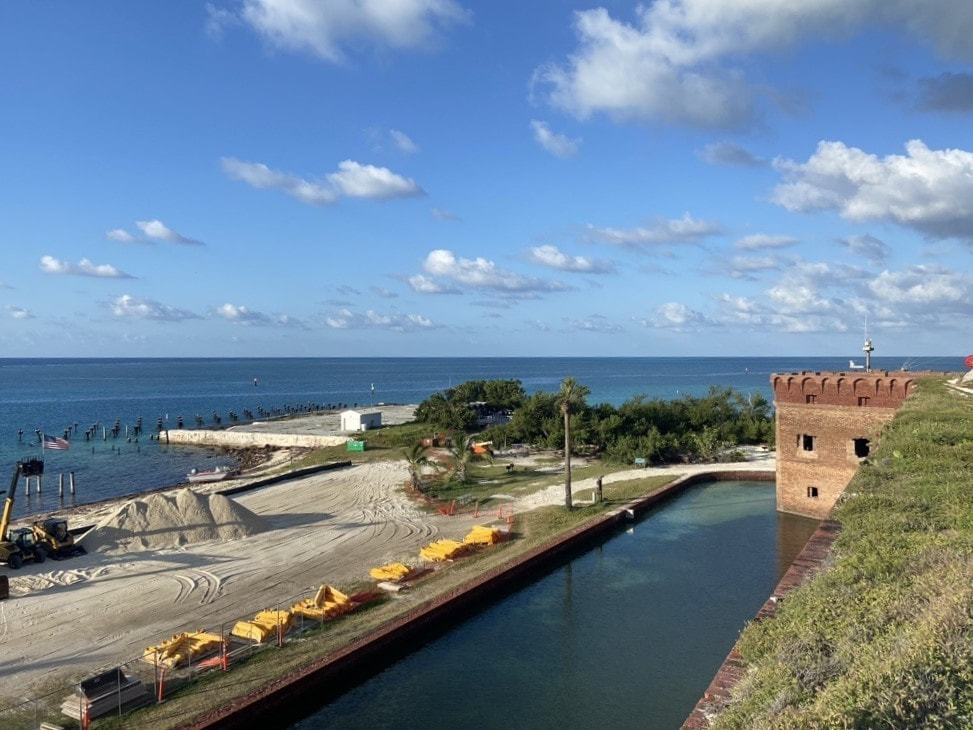

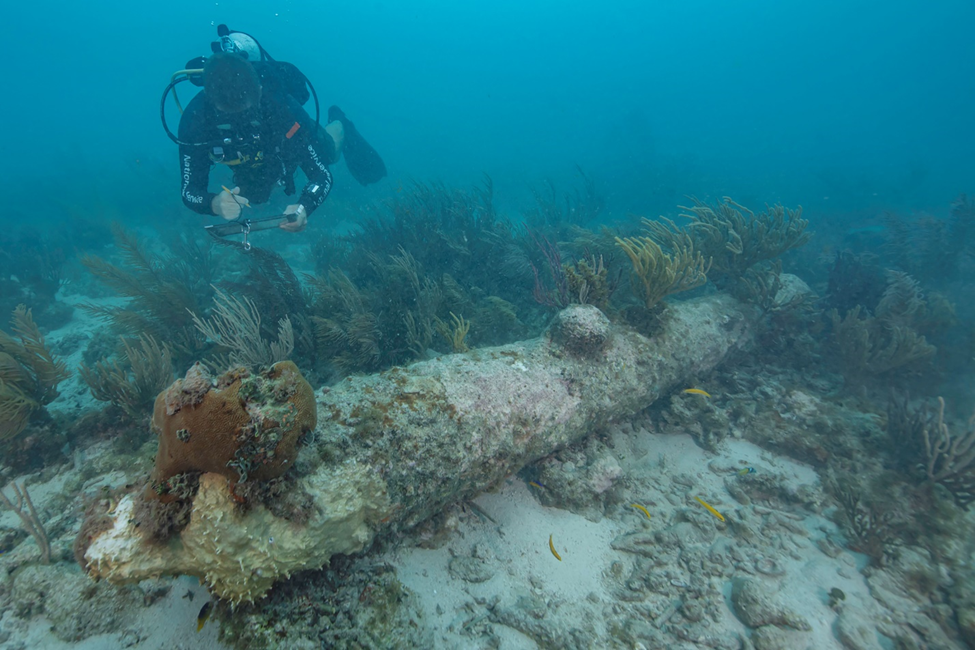
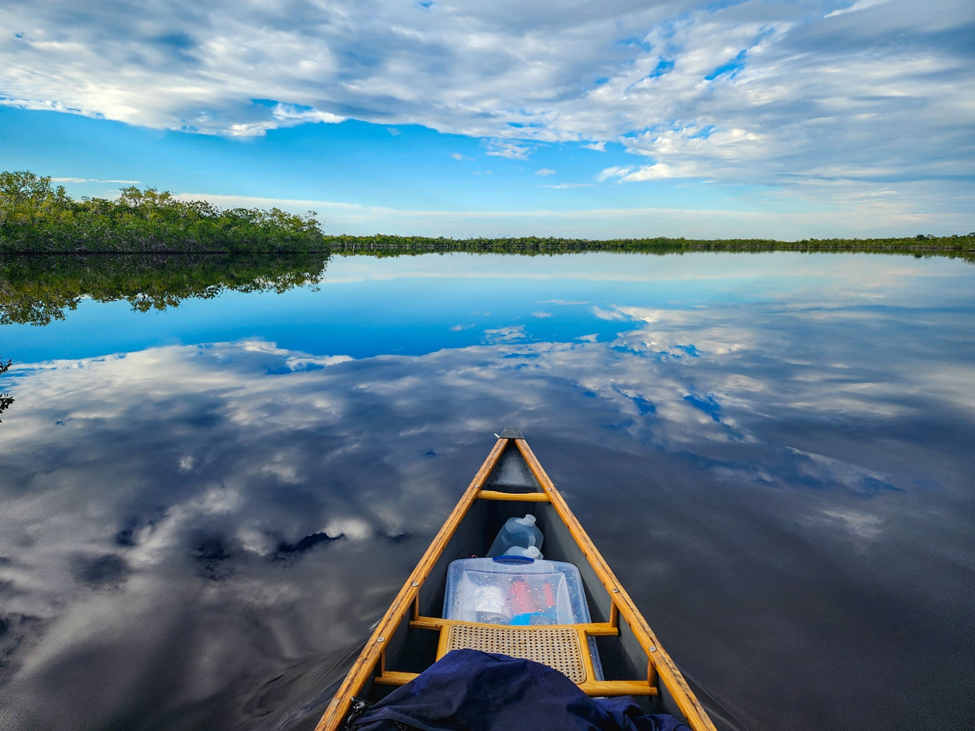
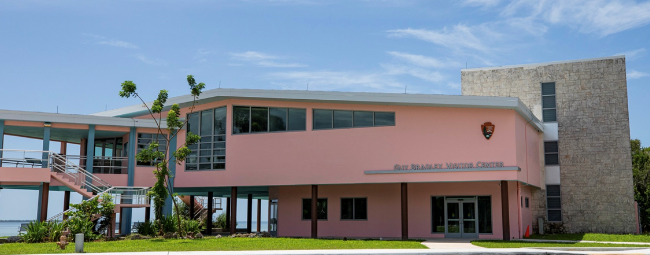

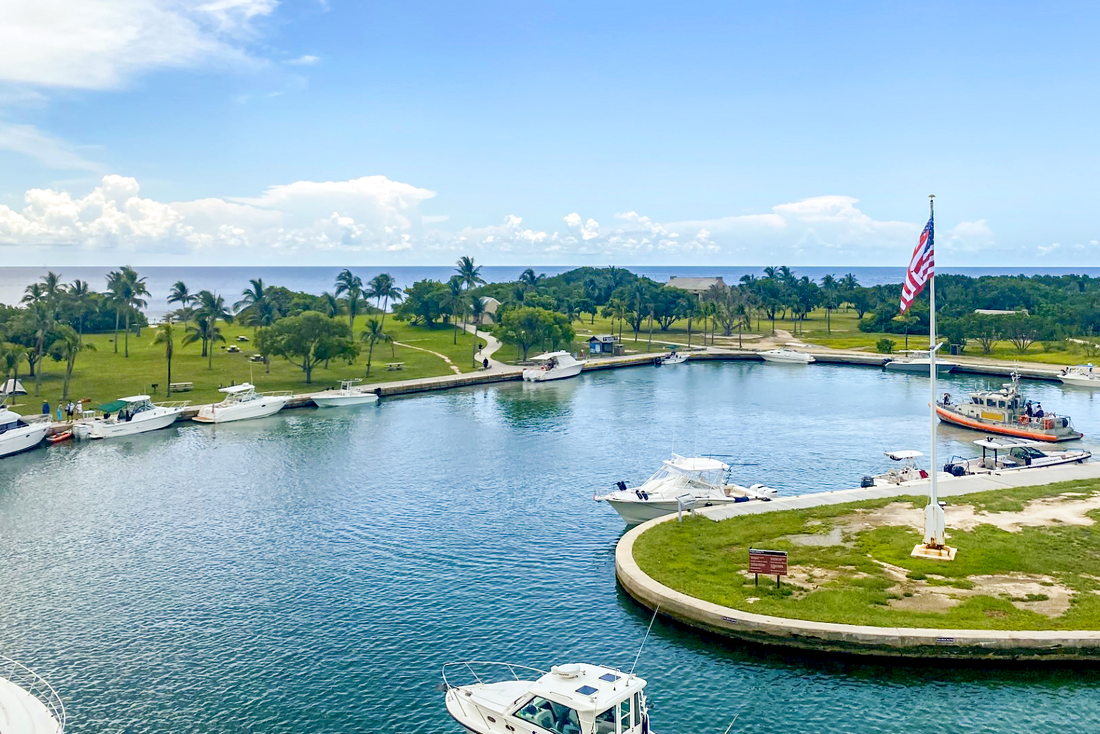
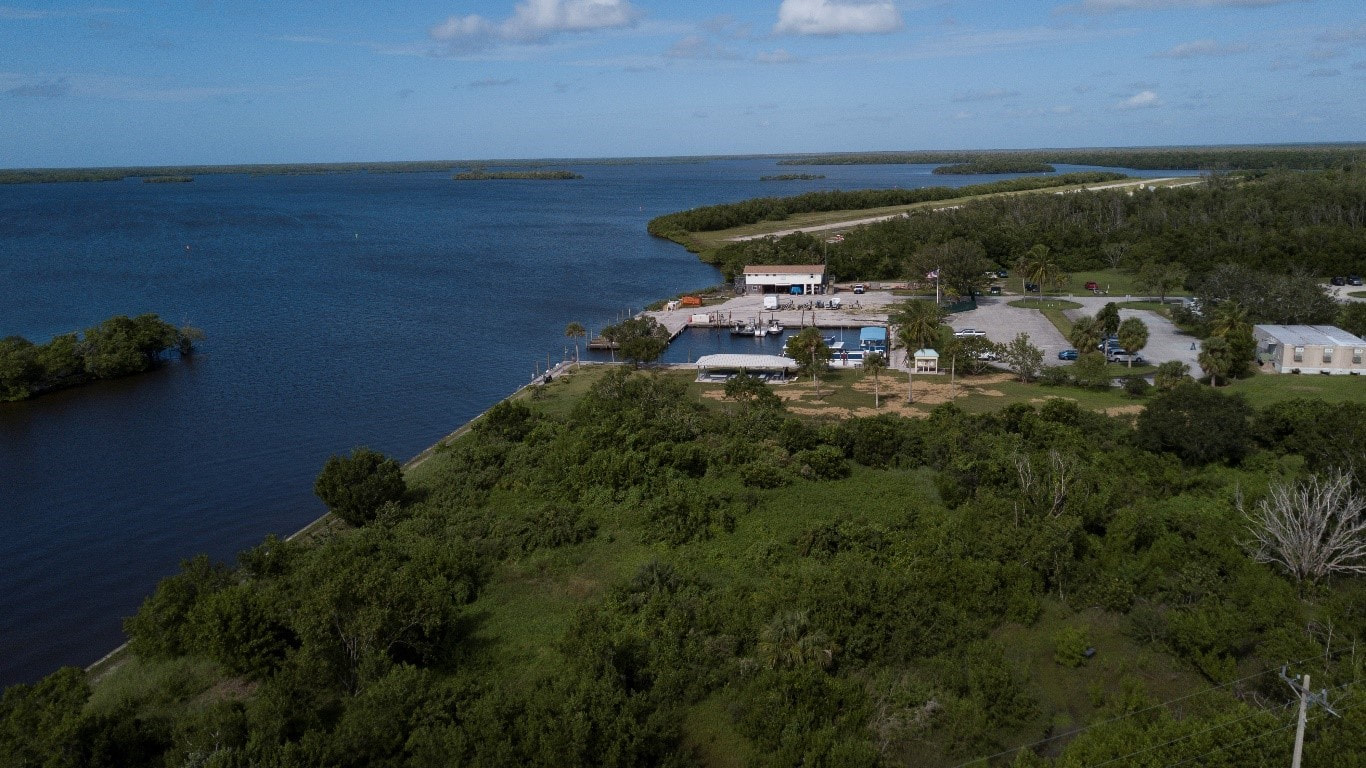
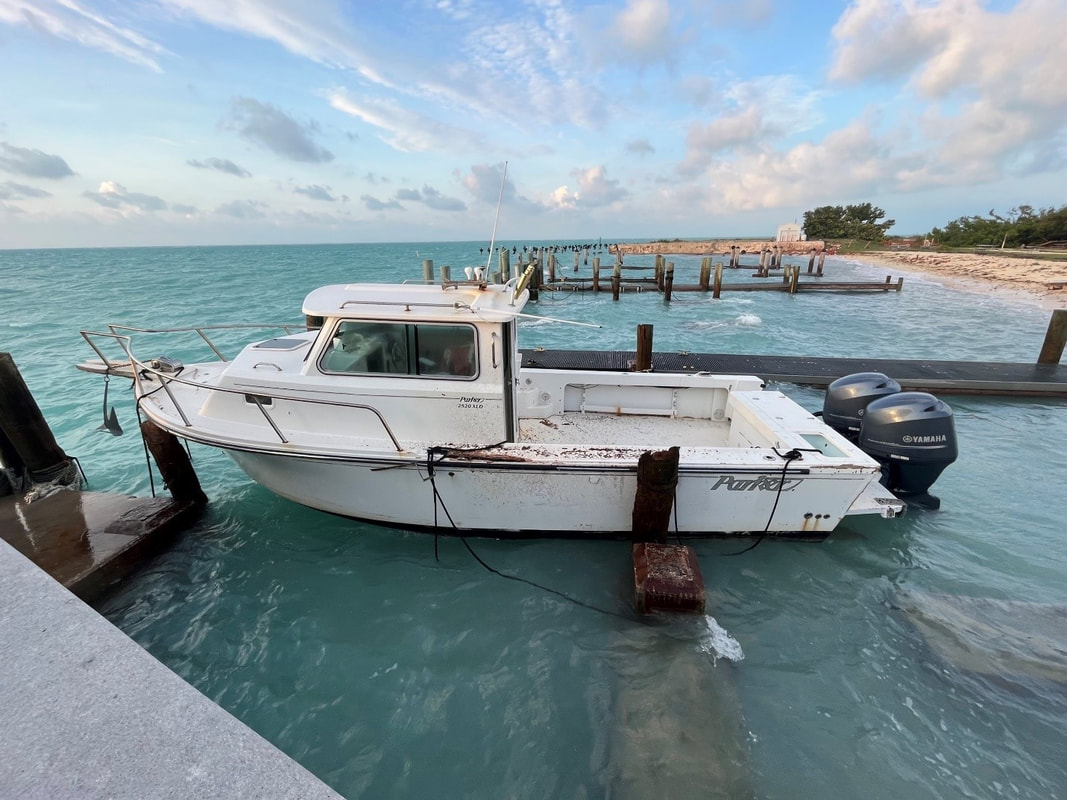
 RSS Feed
RSS Feed
